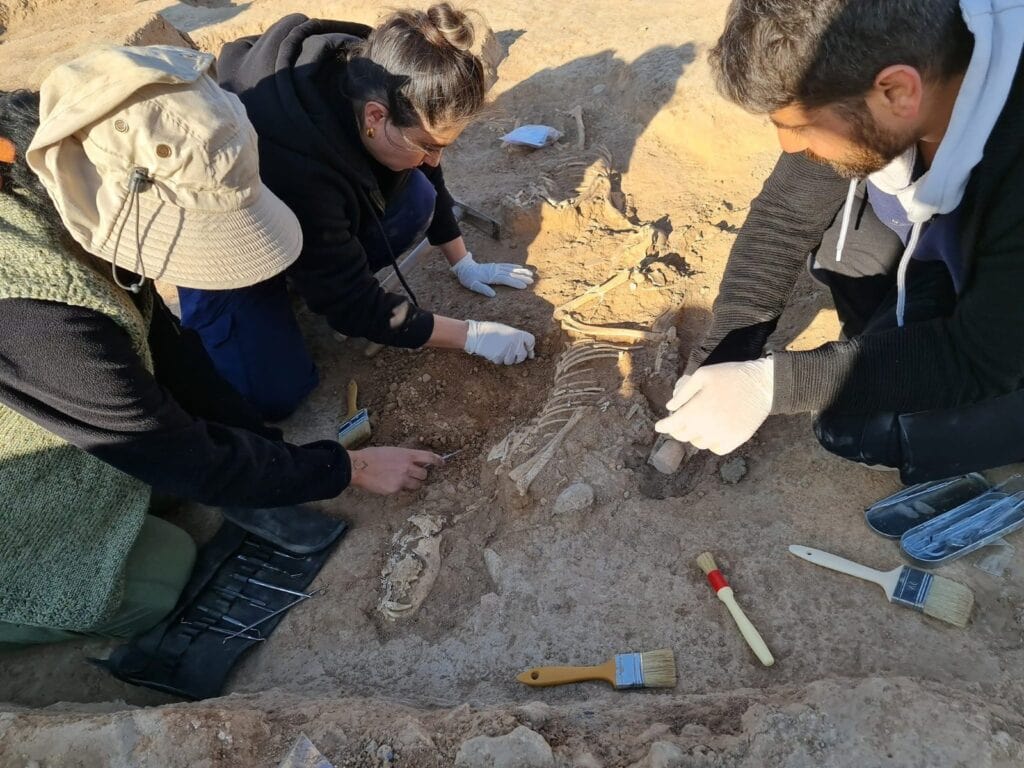
Ritual dog graves associated with the goddess Gula have been uncovered at the Harran archaeological site
In the Harran archaeological site, one of the oldest settlements in the world located in southeastern Türkiye, four dog graves dating back to the Iron Age have been uncovered.
The ritualistically buried dogs are interpreted as a sign of belief in the healing goddess Gula.
The Harran archaeological site, which is on the UNESCO World Heritage Tentative List, is situated 44 kilometers southeast of Şanlıurfa. Mentioned in the Torah, Harran is considered the birthplace of the Prophet Abraham, making it significant in both Judaism and Islam.
Harran has been continuously inhabited from the 3rd millennium BC to the 13th century AD. It has hosted many civilizations, including the Sumerians, Akkadians, Babylonians, Assyrians, Persians, Greeks, Romans, Byzantines, Arabs, and Seljuks.
Excavation work at the Harran archaeological site is being conducted under the leadership of Prof. Dr. Mehmet Önal, the head of the Archaeology Department at Harran University, with contributions from the Turkish Historical Society, Şanlıurfa Metropolitan Municipality, Harran University, and the Harran District Governorship. The project is coordinated by the Şanlıurfa Governorship and the Şanlıurfa Museum Directorate, with support from the Ministry of Culture and Tourism.
Excavation Director Prof. Dr. Mehmet Önal stated that the ritualistically buried dogs remind us of the healing goddess Gula.

Dogs were generally associated only with the cult of Gula, who was the goddess of healing in Mesopotamia. She was known as the “healer of the earth” and “the woman who brings together what has been broken.” It is said that when she acted against enemies, a dog would accompany her. Many dog figures dedicated to Gula and inscribed with prayers have been found in her temples.
Prof. Önal noted that the graves are believed to date back to the Iron Age around 700 BC. “Four dog graves were found in an area of 2-3 meters where the Sin Temple is located. Two locations were prepared, and the burial sites were arranged in a crescent shape. It was believed that the dog could heal diseases. When looking at these graves from that period, it can be said that worship was directed towards the goddess Gula,” he said.
Since dog reliefs were previously found at Harran Castle, the new findings suggest that there was a dog cult in the region during that time.
You may also like
- A 1700-year-old statue of Pan unearthed during the excavations at Polyeuktos in İstanbul
- The granary was found in the ancient city of Sebaste, founded by the first Roman emperor Augustus
- Donalar Kale Kapı Rock Tomb or Donalar Rock Tomb
- Theater emerges as works continue in ancient city of Perinthos
- Urartian King Argishti’s bronze shield revealed the name of an unknown country
- The religious center of Lycia, the ancient city of Letoon
- Who were the Luwians?
- A new study brings a fresh perspective on the Anatolian origin of the Indo-European languages
- Perhaps the oldest thermal treatment center in the world, which has been in continuous use for 2000 years -Basilica Therma Roman Bath or King’s Daughter-
- The largest synagogue of the ancient world, located in the ancient city of Sardis, is being restored











Leave a Reply